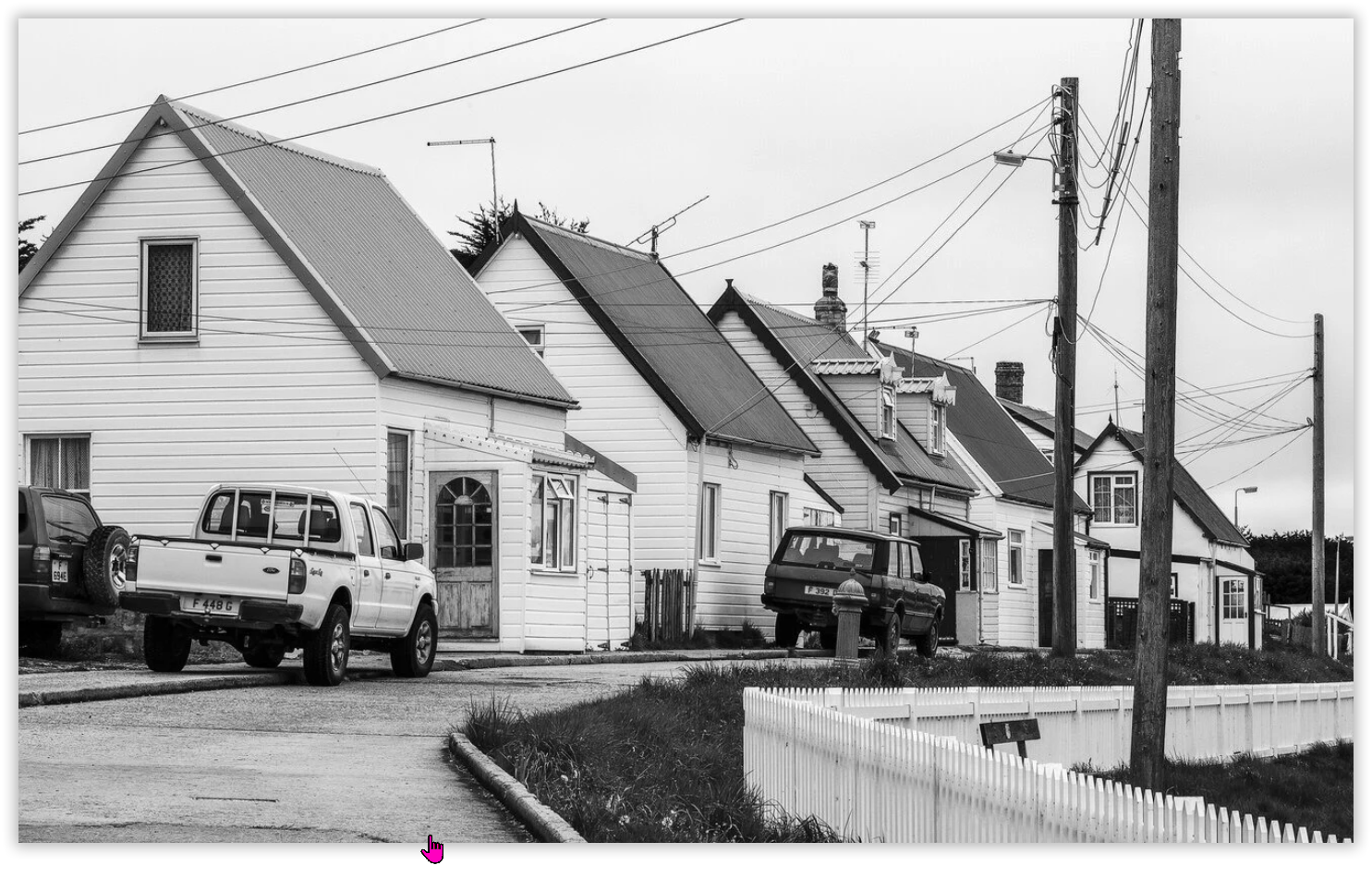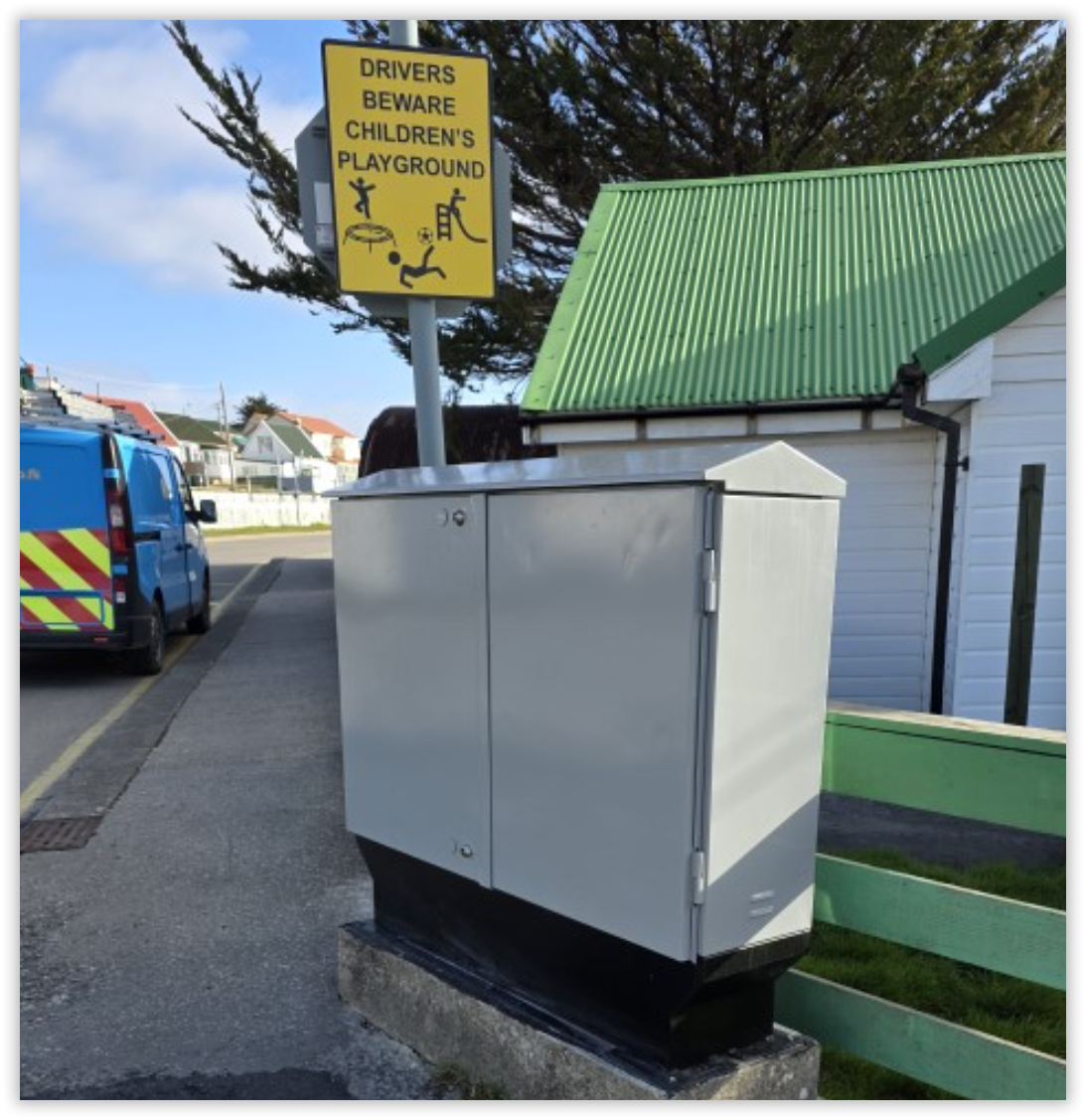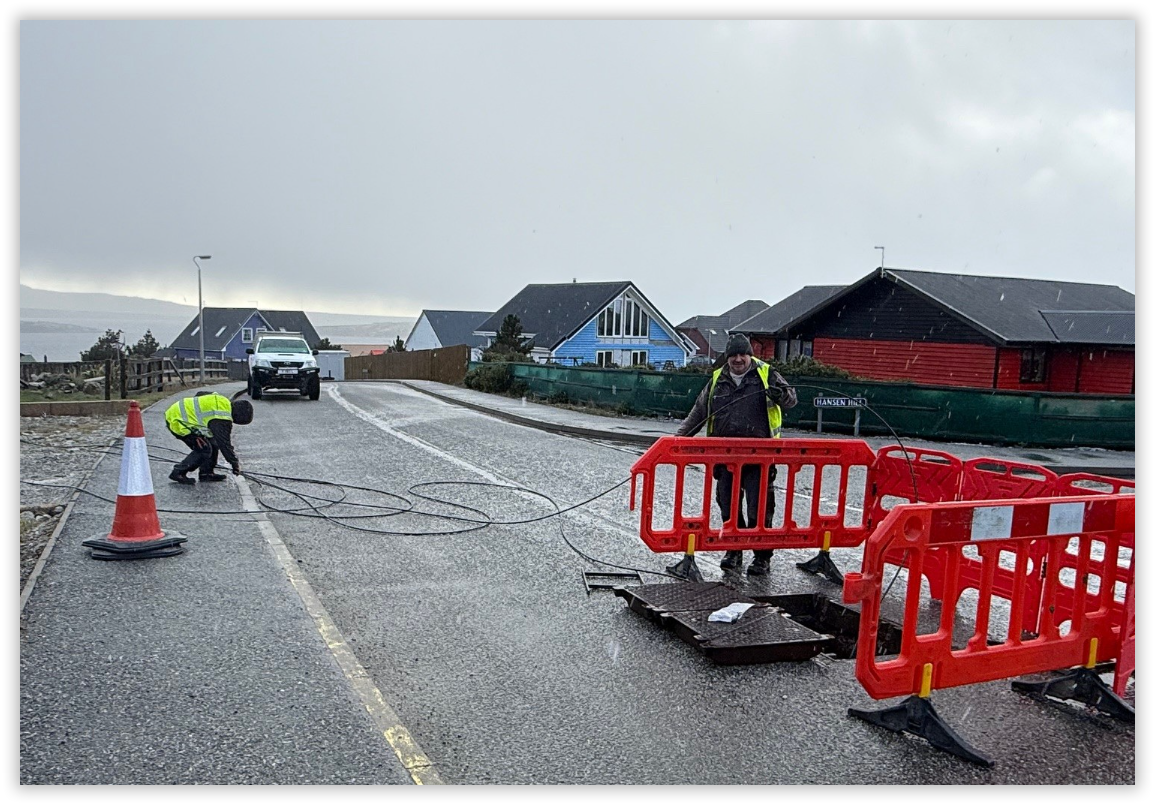
Photo Credit TravelPhotograpyGuru
From a technological perspective, Stanley’s broadband network can be considered a legacy, end-of-life network that is long overdue for an upgrade. The network is still based on copper cable, utilising a mix of Asymmetric Digital Subscriber Line (ADSL) and ADSL2 standards, as far as can be ascertained, which is often considered a stopgap solution in the absence of optical fibre networks in most countries today. Download speeds are constrained by signal loss over long copper cabling to homes and businesses.

ADSL History
ADSL was developed in the late 1980s and standardised in 1999 to provide faster internet speeds using regular telephone lines. It offered higher download speeds than upload speeds, making it well-suited for home and small business use, with performance reaching up to 8 Mbps.
ADSL2, introduced in 2002, improved connection speed, reliability, and power efficiency, increasing speeds to around 12 Mbps. A later version, ADSL2+, further boosted download speeds up to 24 Mbps, allowing users to enjoy better broadband performance without replacing existing copper phone lines.
VDSL (Very-high-bit-rate DSL) arrived in the early 2000s, offering faster connections over short copper lines. Its successor, VDSL2, was standardised 20 years ago in 2006 and promised speeds of up to 100 Mbps in both directions.
To the best of my knowledge, neither VDSL nor VDSL2 technologies have been deployed in the Falklands.
Stanley ADSL Network Upgrades.
Even a legacy ADSL/ADSL2-based network, such as the one deployed in Stanley, can be marginally upgraded, as shown in this Sure SA Facebook post.
“For the past few months Sure has been working hard to enhance the internet connectivity around Stanley by reducing internet line lengths for customers.
We shorten the lines by installing broadband equipment closer to where service is required, and this new building and new cabinet has made this possible. This means that customers who used to be connected to more distant equipment are now connected to these [fibre] cabinets enabling them to attain a higher or maximum line speed in line with their broadband packages. Since Cab 1 and 7 were connected, approximately 200 customers have been moved, with the potential for more customers both business and residential to be moved in the future.”
Starlink arrives
Starlink has been a life-changing broadband service for those who now use it in the islands, even though FIG VSAT licences are still pending.
The rapid growth of Starlink usage has reshaped the broadband landscape in the Falklands. It is no longer just a solution for Camp or islands; it consistently delivers far better performance than the existing licensed broadband service in both speed and reliability. This is why hundreds of Starlink terminals are already in use across the islands today.
However, widespread Starlink usage in Stanley and Camp does not mean that a terrestrial network is not needed. While Starlink brings a critical and game-changing new high download speed option for connectivity, it cannot replace the role of a robust, land-based fibre network in Stanley. Fibre delivers far greater reliability, ultra-low latency, and virtually unlimited upgrade potential, making it the foundation for any long-term digital strategy for the islands.
The introduction of a Starlink Gateway connected to a future fibre backbone for Stanley, supplementing the existing geostationary satellite links and replacing the reliance on self-provisioned accounts, as outlined in my post “Connecting Communities: Inside Starlink’s Community Gateway,” could deliver symmetrical speeds of up to 10 Gbps. This capacity would vastly surpass the islands’ current Intelsat geostationary satellite backhaul, which provides only about 2.5 Gbps in total.
Satellite services like Starlink also enhance network resilience, as recently demonstrated in the 21st September 7-hour island-wide outage, when a local supermarket restored its point-of-sale capability during the blackout.
A hybrid approach, where fibre forms the backbone and Starlink provides excellent download speeds in comparison to the incumbent carriers’ GEO satellite-based broadband service, ensures the islands are both well-connected and resilient.
Investing in fibre will future-proof Stanley’s infrastructure, allowing for seamless integration with any future undersea cable and delivering ultra-high-speed connectivity without the need for costly upgrades later.
What is the best FTTP technology to use in Stanley?
There are three options to consider – GPON, XG-PON, and NG-PON2
- GPON (Gigabit Passive Optical Network) has been widely used since 2003, offering downstream speeds of 2.5 Gbps and upstream speeds of 1.25 Gbps. It is low-cost and mature, but asymmetrical and nearing the limits of its usefulness for new networks.
- XG-PON (10G-PON), standardised in 2016, provides 10 Gbps symmetrical speeds and a <5 ms latency. It is increasingly the global standard for new builds, making it a practical and future-proof choice, despite slightly higher costs.
- NG-PON2 (Next-Generation PON) delivers up to 40 Gbps using multiple optical wavelengths, offering extreme capacity and a future upgrade path.
Why XG-PON is the Right Choice for Stanley
Choosing the right fibre technology for Stanley comes down to several key factors. With around 1,500 homes and 100 businesses, the city represents a small market compared to typical fibre rollouts. Deploying a high-capacity solution like NG-PON2, which can deliver 40 Gbps, would be excessive; the network would never realistically be fully utilised.
At the same time, Stanley’s broadband demand is expected to grow in response to increased video streaming, remote work, cloud services, e-government, and telemedicine. A 10 Gbps symmetrical network, as offered by XG-PON, is more than sufficient for decades -especially if connected to a LEO gateway with geo-satellite connections for enhanced resilience.
Cost efficiency also plays a role: XG-PON equipment and contractors are widely available, and the technology is rapidly becoming the global standard, meaning Stanley can benefit from a mature ecosystem without overpaying or risking a short technology lifecycle, as could happen with GPON.
In short, XG-PON strikes the ideal balance between capacity, cost, and future-proofing for the Falklands.
A major architectural decision
To get really technical for the moment, one major architectural decision will need to be made.
Duct or aerial distribution?
When building a fibre-optic network, the choice between duct, aerial, or a hybrid approach is crucial.
Duct distribution places fibre cables underground, protecting them from weather, damage, and vandalism. It’s reliable, long-lasting, and visually unobtrusive – but costly and slow to install.
Stanley has few existing ducts, and replacing the ADSL/ADSL2 network with fibre would require new ducting along every street, an expensive and highly disruptive process.
Aerial distribution, by contrast, runs cables overhead on poles or streetlights. It’s cheaper and faster to deploy, with easier maintenance, although it is more vulnerable to storms or falling branches. Aerial networks are ideal for rural or low-density areas.
A hybrid model, combining ducts in backbone with aerial deployment elsewhere, may offer the most practical balance between reliability and cost.
Cost estimates
This is a cost estimate based on ‘fingers-in-the-air’ financial calculations to complete a fibre upgrade to Stanley, assuming soft-ground trenching and short drop lengths to homes.
A complete fibre upgrade to Stanley, assuming soft-ground trenching and short drops to homes, would involve several layers of investment:
-
Trenching (12 miles of road at ~£30/m): ≈ £360,000
-
Backbone network materials (cables, panels, splitters): ≈ £230,000
-
Home connections (1,500 homes at ~5 m each): ≈ £225,000
-
Equipment and testing (ONTs, terminations, etc.): £300,000 – £780,000
Total estimated cost: between £1.3 million and £1.8 million.
If the final drop to homes uses aerial connections via existing poles, several hundred thousand pounds could be saved, and the disruption of street-level trenching could be avoided. Utilising aerial distribution for the star backbone could lead to a cost reduction of 30–60%.
I particularly like one of the comments made on this post, so I thought it was worthwhile to include it here, as the commentator may very well be correct!
“Equipment costs are way overestimated. No way do you need 300k in kit for 1500 subs. After all you only need *one* OLT for all of Stanley.
XG-PON is nice, but way, way overkill. It’s not like providing *only* 2.5G per subscriber will be too little. Might as well go with GPON and save a bundle on kit. You can always upgrade later when XG-PON prices have come down. XG-PON and GPON can coexist on the same network after all so upgrading later isn’t much of an imposition.”
Could 5G Be an Alternative to Fibre?
While fibre remains the ultimate goal, 5G fixed wireless access could offer a faster, lower-cost step forward for Stanley. Modern 5G networks using mid-band spectrum can deliver hundreds of Mbps with low latency, comparable to entry-level fibre.
With Stanley’s small size, just a few 5G base stations connected to a fibre or microwave backhaul could provide near-citywide coverage. This approach would reduce the need for disruptive street trenching and allow broadband upgrades to be rolled out within months instead of years.
However, 5G is not a full replacement for fibre. Wireless capacity is shared, and each base station still relies on high-speed backhaul – ideally fibre – to reach its potential.
A hybrid model could therefore make sense: deploy limited 5G to improve service quickly while continuing with a phased FTTP rollout for long-term resilience and scalability. In this way, 5G becomes a bridge toward Stanley’s full-fibre future.
Conclusions
Chris Gare, OpenFalklands, October 2025, copyright OpenFalklands



Equipment costs are way overestimated. No way do you need 300k in kit for 1500 subs. After all you only need *one* OLT for all of Stanley.
XG-PON is nice, but way, way overkill. It’s not like providing *only* 2.5G per subscriber will be too little. Might as well go with GPON and save a bundle on kit. You can always upgrade later when XG-PON prices have come down. XG-PON and GPON can coexist on the same network after all so upgrading later isn’t much of an imposition.
Since you are trenching, put in ducts. Seriously consider using microducts.
This sounds good and I hope that you are right as I am not too familiar with current GPON/XG-PON costs. Can you provide a better estimate?